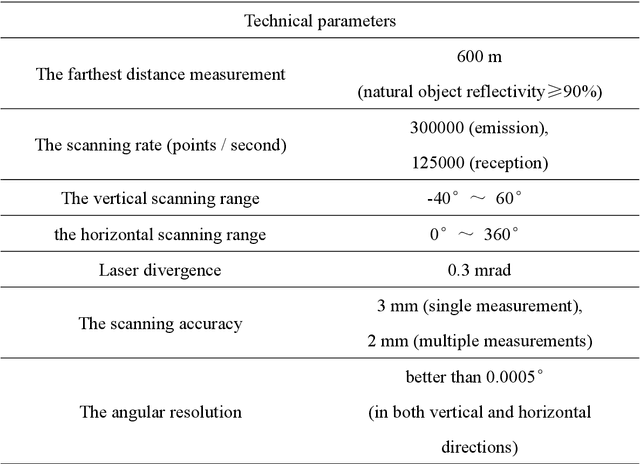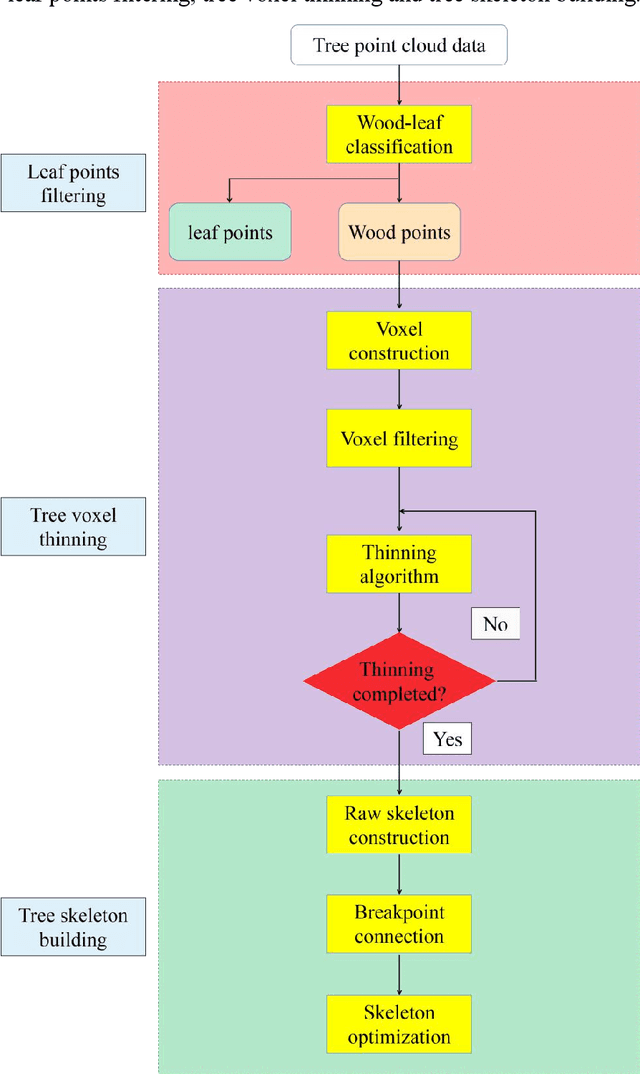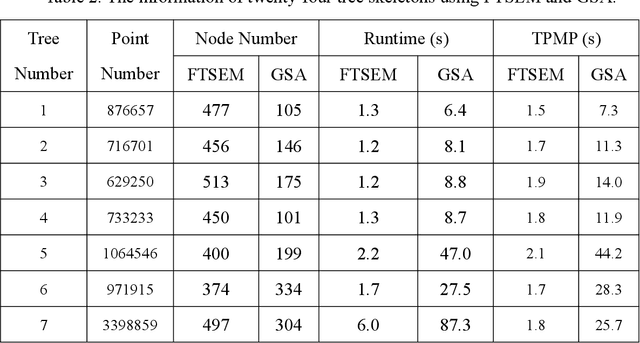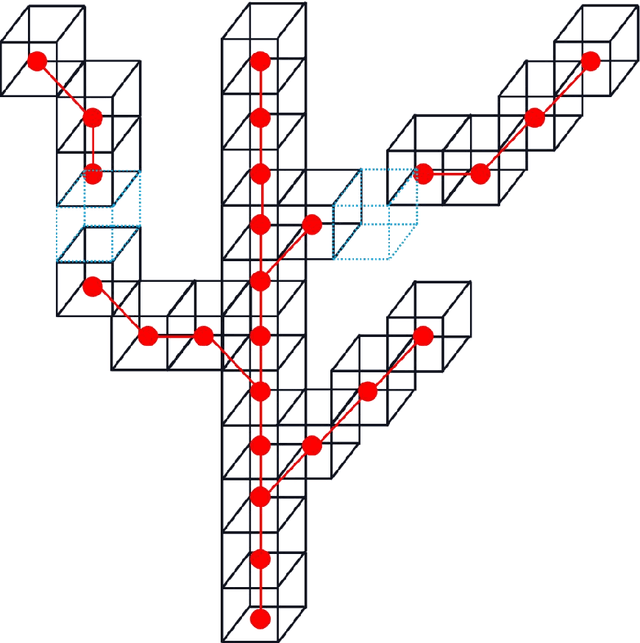Jingqian Sun
Fast tree skeleton extraction using voxel thinning based on tree point cloud
Oct 18, 2021



Abstract:Tree skeleton plays an important role in tree structure analysis, forest inventory and ecosystem monitoring. However, it is a challenge to extract a skeleton from a tree point cloud with complex branches. In this paper, an automatic and fast tree skeleton extraction method (FTSEM) based on voxel thinning is proposed. In this method, a wood-leaf classification algorithm was introduced to filter leaf points for the reduction of the leaf interference on tree skeleton generation, tree voxel thinning was adopted to extract raw tree skeleton quickly, and a breakpoint connection algorithm was used to improve the skeleton connectivity and completeness. Experiments were carried out in Haidian Park, Beijing, in which 24 trees were scanned and processed to obtain tree skeletons. The graph search algorithm (GSA) is used to extract tree skeletons based on the same datasets. Compared with GSA method, the FTSEM method obtained more complete tree skeletons. And the time cost of the FTSEM method is evaluated using the runtime and time per million points (TPMP). The runtime of FTSEM is from 1.0 s to 13.0 s, and the runtime of GSA is from 6.4 s to 309.3 s. The average value of TPMP is 1.8 s for FTSEM, and 22.3 s for GSA respectively. The experimental results demonstrate that the proposed method is feasible, robust, and fast with a good potential on tree skeleton extraction.
Wood-leaf classification of tree point cloud based on intensity and geometrical information
Aug 02, 2021



Abstract:Terrestrial laser scanning (TLS) can obtain tree point cloud with high precision and high density. Efficient classification of wood points and leaf points is essential to study tree structural parameters and ecological characteristics. By using both the intensity and spatial information, a three-step classification and verification method was proposed to achieve automated wood-leaf classification. Tree point cloud was classified into wood points and leaf points by using intensity threshold, neighborhood density and voxelization successively. Experiment was carried in Haidian Park, Beijing, and 24 trees were scanned by using the RIEGL VZ-400 scanner. The tree point clouds were processed by using the proposed method, whose classification results were compared with the manual classification results which were used as standard results. To evaluate the classification accuracy, three indicators were used in the experiment, which are Overall Accuracy (OA), Kappa coefficient (Kappa) and Matthews correlation coefficient (MCC). The ranges of OA, Kappa and MCC of the proposed method are from 0.9167 to 0.9872, from 0.7276 to 0.9191, and from 0.7544 to 0.9211 respectively. The average values of OA, Kappa and MCC are 0.9550, 0.8547 and 0.8627 respectively. Time cost of wood-leaf classification was also recorded to evaluate the algorithm efficiency. The average processing time are 1.4 seconds per million points. The results showed that the proposed method performed well automatically and quickly on wood-leaf classification based on the experimental dataset.
Automatic sampling and training method for wood-leaf classification based on tree terrestrial point cloud
Dec 06, 2020



Abstract:Terrestrial laser scanning technology provides an efficient and accuracy solution for acquiring three-dimensional information of plants. The leaf-wood classification of plant point cloud data is a fundamental step for some forestry and biological research. An automatic sampling and training method for classification was proposed based on tree point cloud data. The plane fitting method was used for selecting leaf sample points and wood sample points automatically, then two local features were calculated for training and classification by using support vector machine (SVM) algorithm. The point cloud data of ten trees were tested by using the proposed method and a manual selection method. The average correct classification rate and kappa coefficient are 0.9305 and 0.7904, respectively. The results show that the proposed method had better efficiency and accuracy comparing to the manual selection method.
 Add to Chrome
Add to Chrome Add to Firefox
Add to Firefox Add to Edge
Add to Edge